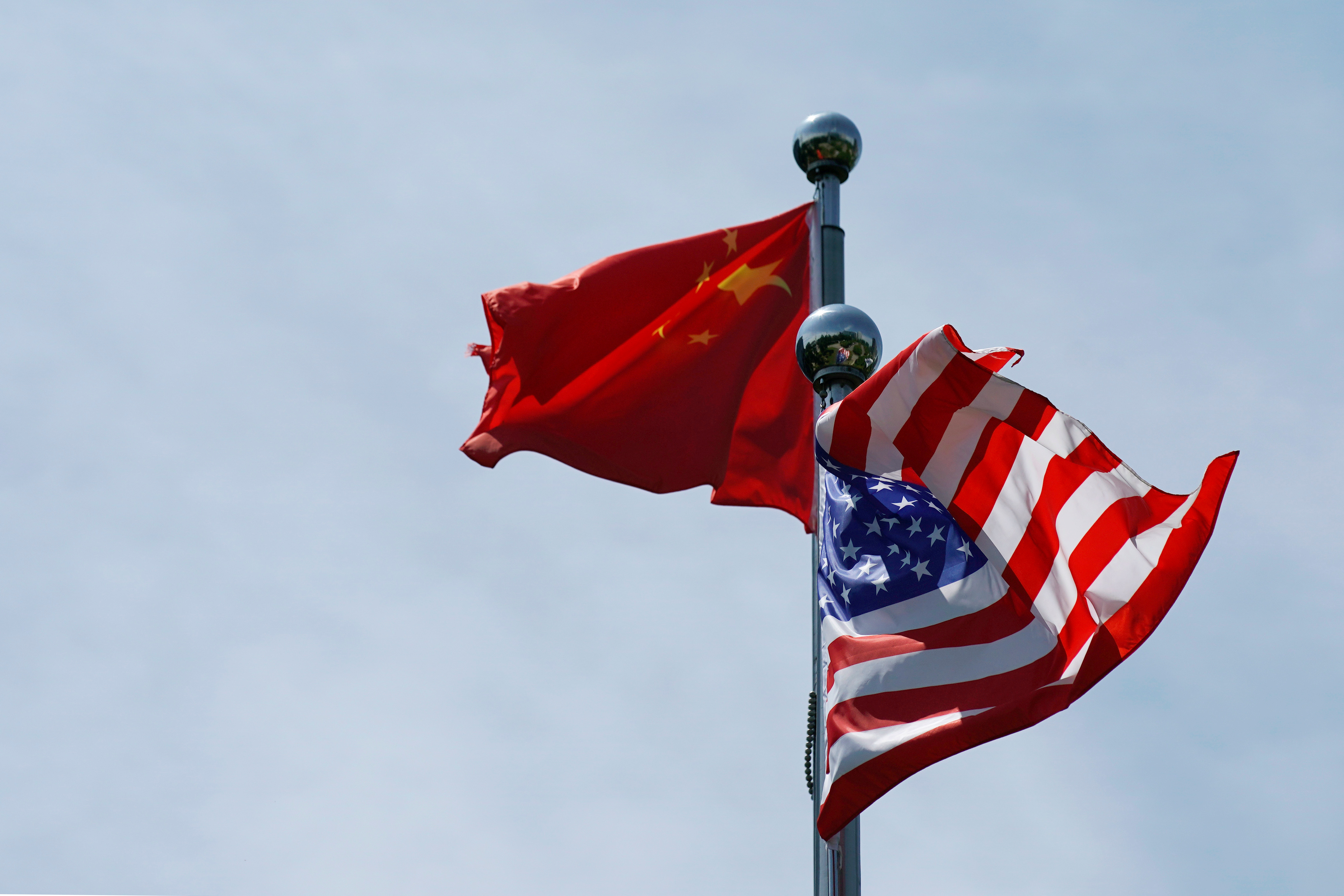Military Base: A Focal Point In US-China Strategic Competition

Table of Contents
Geographic Distribution and Strategic Importance of US Military Bases
The United States maintains a vast network of military bases globally, strategically positioned to project power and influence. The location and capabilities of these military bases are critical in the ongoing competition with China.
Pacific Rim Presence: A Bastion of Defense
The Pacific Rim is a key area of focus, with US military bases in Japan, South Korea, Guam, and Australia playing critical roles in countering Chinese influence in the South China Sea and Taiwan Strait. These bases represent a significant military presence.
- Enhanced Capabilities: These bases boast advanced airfields, sophisticated naval facilities, and state-of-the-art missile defense systems, providing a robust defensive and offensive posture. Upgrades to these facilities are constantly underway to maintain a technological edge.
- Strategic Proximity: Their strategic location near potential conflict zones allows for rapid response capabilities and deterrence against any aggressive actions. The proximity of these military bases to potential flashpoints is a key element of US strategy.
- Joint Military Exercises: These bases serve as crucial hubs for joint military exercises with allies, strengthening interoperability and demonstrating commitment to regional security. Regular drills and joint operations enhance readiness and coordination.
Global Reach and Power Projection: A Network of Influence
Beyond the Pacific, the US military base network extends globally, enabling power projection and monitoring of Chinese activities worldwide.
- Indian Ocean Region: Bases in this region are vital for monitoring Chinese maritime activity, including its expanding naval presence and Belt and Road Initiative projects. These military bases provide crucial intelligence-gathering capabilities.
- Europe and the Middle East: Military bases in these regions play a role in addressing China's Belt and Road Initiative and its growing influence in these areas, supporting broader geopolitical strategy. They also contribute to maintaining global stability.
- Logistical and Support Capabilities: This extensive network provides critical logistical support and resupply capabilities, enabling sustained military operations globally. The network of bases ensures the operational readiness of US military assets across the world.
China's Expanding Military Infrastructure and its Implications
China's military modernization program is rapidly expanding its reach and capabilities, including its strategic use of military bases. This expansion significantly impacts the global geopolitical landscape.
Artificial Islands and Base Development in the South China Sea: A Point of Contention
China's construction of artificial islands in the South China Sea and the subsequent development of military installations on them are major sources of tension and geopolitical disputes.
- Freedom of Navigation: These actions have raised concerns regarding freedom of navigation and regional stability, leading to international condemnation. The militarization of these islands directly challenges international norms.
- Advanced Weaponry: China's deployment of advanced weaponry on these bases further escalates tensions and challenges the regional balance of power. The sophistication of these weapons systems is a growing concern.
- International Response: The international community's response to China's actions in the South China Sea has been mixed, highlighting the complexities of managing this strategic competition. International law and maritime conventions are at the heart of the conflict.
Base Development Beyond the South China Sea: A Global Reach
China's efforts to establish military bases or secure access points in other regions, including Africa and the Pacific, are further expanding its strategic reach.
- Economic and Diplomatic Tools: China leverages economic and diplomatic tools to expand its military reach, offering investment and aid in exchange for strategic access. This represents a sophisticated strategy of global influence.
- Global Power Dynamics: These moves have significant implications for global power dynamics, increasing competition and the potential for conflict. The global distribution of Chinese influence is changing strategic calculations.
- Increased Military Competition: The potential for increased military competition and conflict in various regions is a serious concern arising from China's expanding military footprint.
The Role of Technology and Cyber Warfare in Military Base Security
Technology plays a crucial role in shaping the strategic landscape, impacting both the security and capabilities of military bases.
Cybersecurity Threats and Defense Mechanisms: A Digital Battlefield
Military bases are increasingly vulnerable to cyberattacks, requiring robust cybersecurity measures.
- Data Breaches and Disruption: The potential for data breaches and disruption of operations through cyberattacks poses a significant threat to base security. The vulnerability of critical infrastructure is a major concern.
- Technological Advancements: Advanced technologies are being implemented to enhance cybersecurity, but the arms race in cyberspace is ongoing. Constant innovation is needed to maintain a defensive edge.
- International Cooperation: International cooperation is essential to combatting cyber threats effectively and reducing the risk of escalation. Shared intelligence and coordinated responses are key.
Advanced Weaponry and Defense Systems: The Technological Arms Race
Advanced technologies like AI, hypersonic weapons, and missile defense systems are transforming the strategic balance.
- Impact on Base Importance: These technologies are changing the importance and vulnerability of military bases, requiring adaptations to defenses and strategies. The effectiveness of traditional defenses is being challenged.
- US-China Arms Race: The arms race between the US and China fuels this technological advancement, impacting regional and global security. The constant development of new weapons systems raises the stakes.
- Potential for Escalation: The potential for escalation and the need for diplomatic solutions to mitigate risks associated with these advanced weapons systems is paramount.
Conclusion
The strategic competition between the US and China is intensely focused on the location, capability, and security of military bases globally. The geographic distribution of US bases, the expansion of Chinese military infrastructure, and the role of technology are all critical elements in this complex dynamic. Understanding the strategic importance of the military base in this competition is crucial for navigating the increasingly volatile geopolitical landscape. Further research into the evolving roles and vulnerabilities of military bases is vital to ensuring regional and global stability and fostering responsible power projection. We need continued dialogue and analysis of the military base as a key component of US-China relations. The future of global security is inextricably linked to how this competition over military bases unfolds.

Featured Posts
-
 Open Ais Chat Gpt The Ftc Investigation And Its Potential Outcomes
Apr 26, 2025
Open Ais Chat Gpt The Ftc Investigation And Its Potential Outcomes
Apr 26, 2025 -
 Layoff Reversal Accepting Or Rejecting Your Former Employers Offer
Apr 26, 2025
Layoff Reversal Accepting Or Rejecting Your Former Employers Offer
Apr 26, 2025 -
 Trump On Ukraine And Nato A Critical Examination
Apr 26, 2025
Trump On Ukraine And Nato A Critical Examination
Apr 26, 2025 -
 Getting My Hands On A Switch 2 The Game Stop Method
Apr 26, 2025
Getting My Hands On A Switch 2 The Game Stop Method
Apr 26, 2025 -
 Using Ai To Analyze And Transform Repetitive Scatological Data Into A Podcast
Apr 26, 2025
Using Ai To Analyze And Transform Repetitive Scatological Data Into A Podcast
Apr 26, 2025
